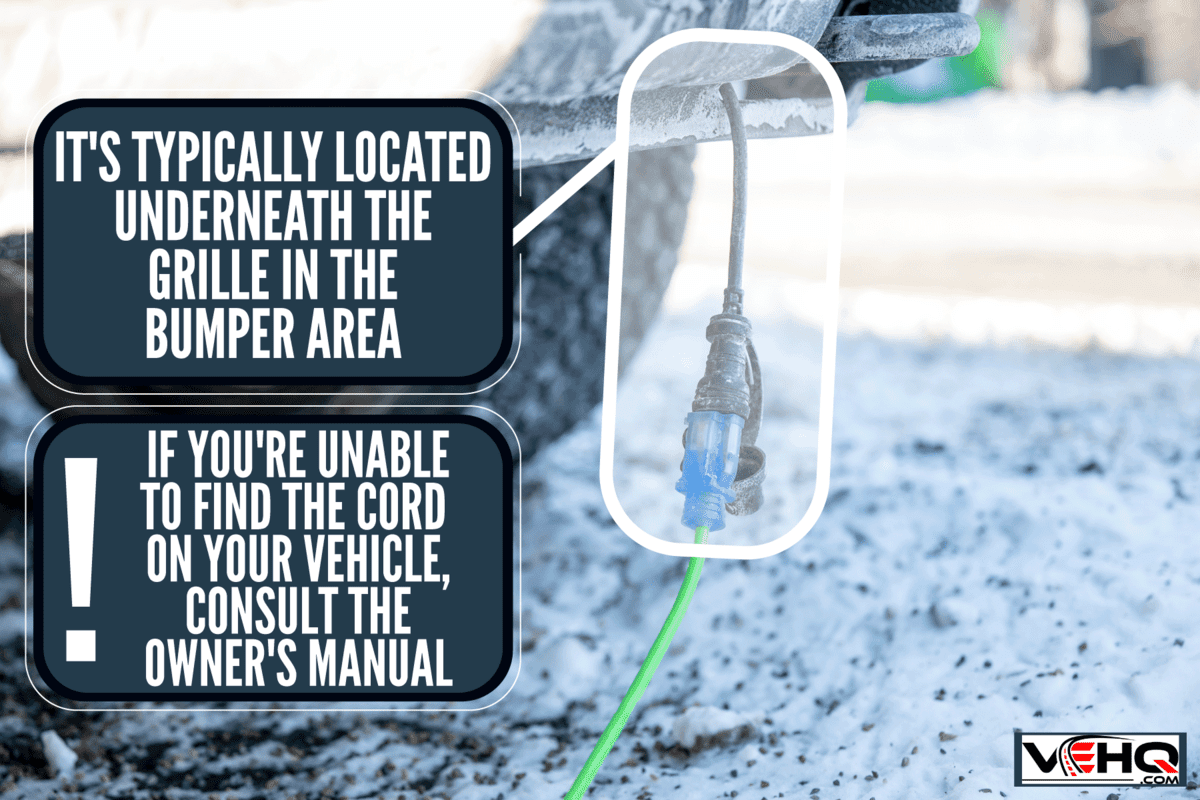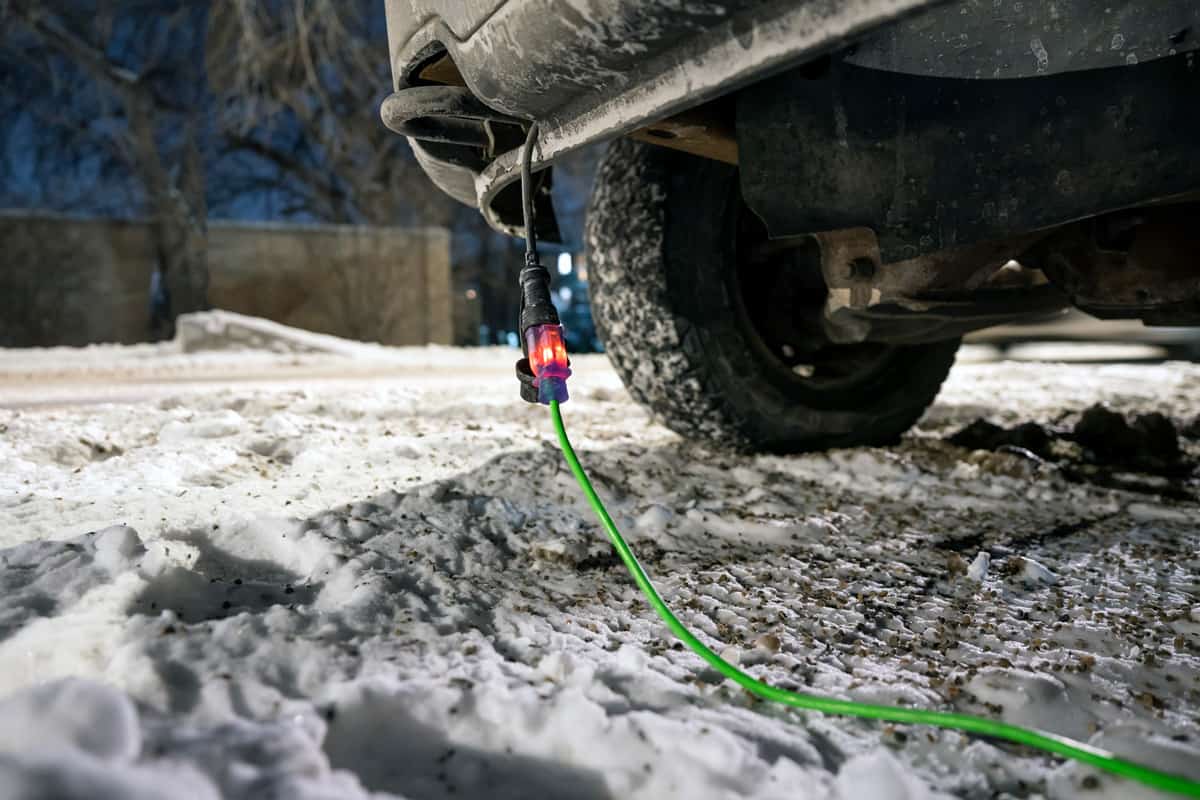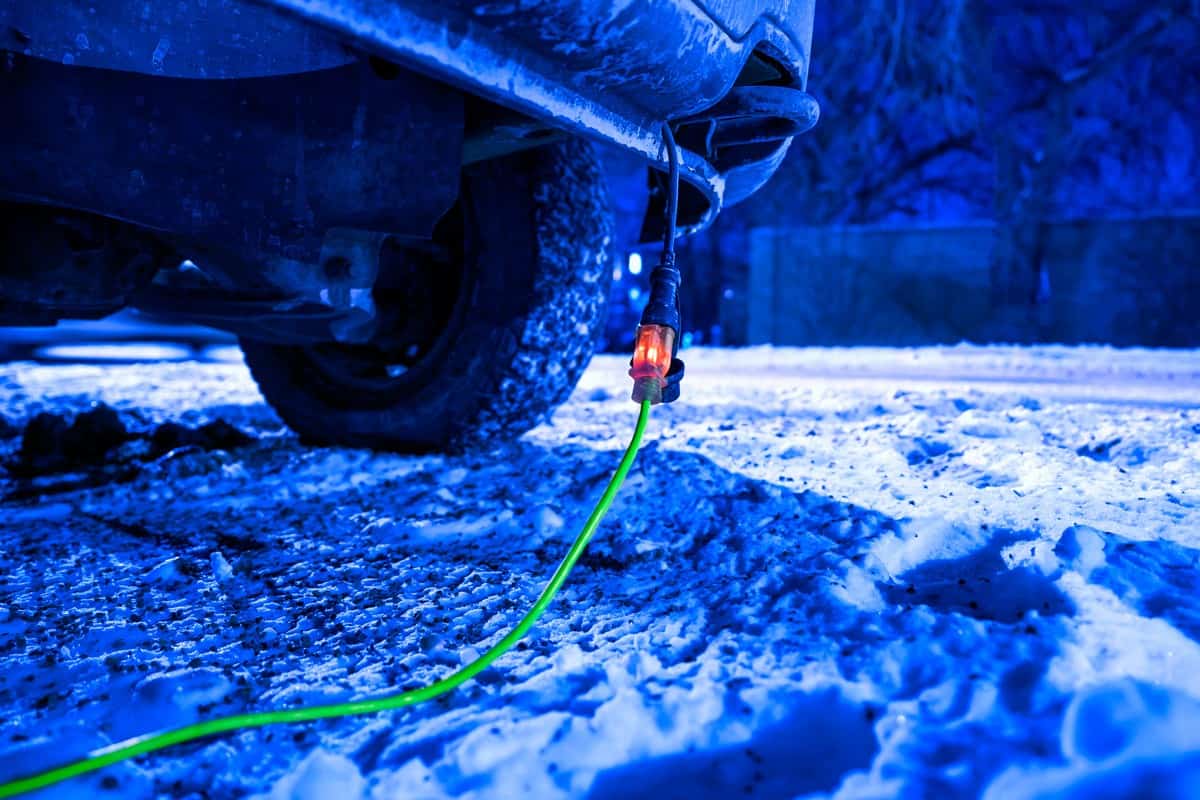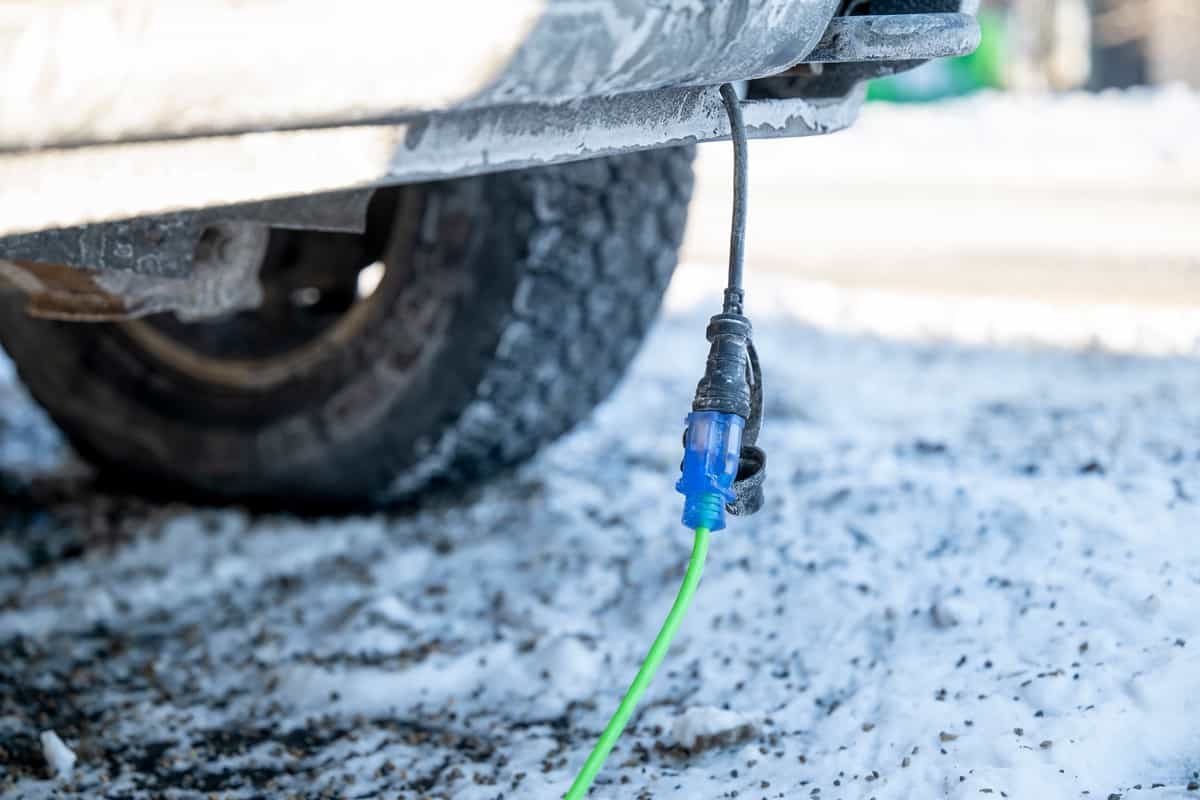Diesel vehicles have a lot of nuances that make them quite different than their gasoline counterparts. One such difference is the presence of an engine block heater. Since diesel engines rely on compression alone to ignite the fuel, their operation can be hindered by cold weather. The engine block heater keeps diesel engines warm enough to start when it's cold outside.
But if you just got your first diesel vehicle, you might not know how to locate the engine block heater cord. For your convenience, we brought you the answer.
The exact location of the engine block heater cord can vary from vehicle to vehicle, but it's typically located underneath the grille in the bumper area. If you're unable to find the cord on your vehicle, consult the owner's manual.
If you still have some questions about engine block heaters, don't worry. In this post, we'll discuss the topic at length. We'll talk about what the purpose of a block heater is, whether it's necessary, how to tell if your vehicle has one, and much more. Without further ado, let's get into it!

How To Locate Your Engine Block Heater Cord
The engine block heater cord location can be slightly different from one vehicle to another, but you're sure to find it somewhere underneath the grille area close to the bumper or headlight/fog light assembly. If you're still unable to locate the cord, look in the owner's manual for more information.
Take a look at this video on the location of the engine block heater cord on several Ford vehicles:
What Does A Block Heater Do For A Diesel?
Unlike gasoline engines, diesel engines don't have spark plugs to ignite the fuel. Instead, diesel engines rely on compression-generated heat to ignite the fuel for engine operation.
Diesel engines have glow plugs that heat up the combustion chamber to prime it for ignition, but in extremely cold conditions, this heat might not be adequate. That's where engine block heaters come into play.
Block heaters provide additional heat to the engine block to facilitate ignition. More specifically, block heaters heat the coolant in the engine, which makes it easier to start, even in extreme cold.
Does Every Car Have A Block Heater?

Not all cars come standard with engine block heaters. Block heaters are most common on diesel engines since they require higher temperatures to effectively start.
Is A Block Heater Necessary?
An engine block heater may or may not be necessary depending on where you live.
If you live in a state like Florida that has a warm climate all year, an engine block heater will likely never be a necessity.
It's highly unlikely that the temperature will ever drop low enough to warrant the additional heat provided by a block heater. The glow plugs in a diesel engine will easily be able to provide the necessary heat for ignition.
On the other hand, if you live in a state like Alaska which has one of the lowest average temperatures in the country, an engine block heater will be necessary more often than not. For a good chunk of the year, the temperature will simply be too cold for a diesel engine to start without some form of auxiliary heat.
And this includes gasoline vehicles. Although it's more difficult for diesel engines to start in the cold than it is for gasoline engines, gasoline engines can also struggle in bitterly cold conditions.
It's not uncommon for gasoline vehicle owners who live in cold regions to have aftermarket block heaters (and even battery heaters—more on that later) installed.
It's also worth noting that, even if your vehicle is capable of starting in extreme cold, the engine and the supporting components will work significantly harder to do so, resulting in undue wear. In addition, attempting to start the engine when there isn't adequate heat will waste fuel.
So, regardless of whether you drive a gasoline- or diesel-powered vehicle, if you live in a cold region, a block heater will pay dividends in terms of protecting your vehicle from excessive wear.
Take a look at this quick video on block heaters:
How Can I Tell If My Car Has A Block Heater?
If you're not sure if your vehicle is equipped with an engine block heater, there's an easy way to tell. Simply take a look around the grille/bumper area and try to find the cord. If there's a cord, your vehicle has a block heater. If there isn't a cord, your vehicle doesn't have a block heater.
Does A Block Heater Charge The Battery?

An engine block heater doesn't charge the battery, as the engine and battery are separate components; a block heater simply keeps the engine warm.
However, the battery is definitely a valid concern when it comes to cold weather. Car batteries lose strength as the temperature decreases. Thus, it's recommended to purchase a battery heater if you live in a cold region.
When it comes to keeping the battery warm, there are two options—an insulated blanket-like covering or a plug-in warming device.
An insulation kit is essentially a cover that wraps around the battery, keeping it warm. This is a great solution that, once installed, requires no additional attention.
Click here to see this battery insulation kit on Amazon.
An insulation kit will undoubtedly help keep the battery warm, but for maximum warmth, consider getting a plug-in warmer. This type of warmer sits underneath the battery and plugs into a power source to provide heat.
Additionally, the cords from this device and the engine block heater can potentially be consolidated into one plug for added convenience.
Click here to see this plug-in battery warmer on Amazon.
But for maximum cold protection, it's recommended to use both an insulation kit and a plug-in warming device. With these two pieces of equipment, you can rest assured that your battery will be operating at peak strength when you need it most.
Can I Leave My Block Heater Plugged In All Night?
You certainly can leave your block heater plugged in all night, but doing so will end up wasting a substantial amount of electricity. In severely cold conditions, a block heater only needs to be plugged in a few hours before the vehicle is to be driven.
The best approach is to use an outdoor timer to activate the block heater when desired. For instance, if you need to leave at 7:30 AM, you can program the timer to turn the block heater on at 4:30 AM (or any other time) to ensure the engine can easily start without wasting electricity all night long.
Click here to see this outdoor timer on Amazon.
What Can You Do If You Don't Have A Block Heater?
If your vehicle doesn't have a block heater and you don't want to have an aftermarket heater installed, there are a couple of things you can do to ensure that your engine stays warm in cold conditions:
Use An Oil Pan Heater
An oil pan heater simply attaches to the oil pan and provides heat when plugged in. A magnetic heater is preferred, as it can attach to multiple components under the vehicle as needed.
It's worth pointing out that, though this type of heater will heat the oil that has accumulated in the bottom of the oil pan, it won't necessarily heat the entire engine in the same way as a block heater would. Nonetheless, it's still a great option.
Click here to see this heat magnet on Amazon.
Use A Trouble Work Light
A simple mechanic light is another good option for keeping the engine warm. Place it under the hood where desired, and as long as there is at least a 60-watt incandescent bulb, it will provide enough heat to be a viable substitute for a block heater. To save on your electric bill, use it in conjunction with a timer.
Be sure to keep the light away from any plastic or rubber components that could melt from the heat.
Click here to see this trouble work light on Amazon.
In Closing

We hope this guide has helped you locate the engine block heater cord on your vehicle. Remember to plug the block heater in when it's cold outside to ensure a successful engine start.
And if you have a gasoline-powered vehicle, you can have an aftermarket block heater installed to make it easier for the engine to start in cold conditions.
Before you go, be sure to take a look at these other posts that may be of interest to you:
Can Engine Coolant Freeze? [And At What Temperature]





